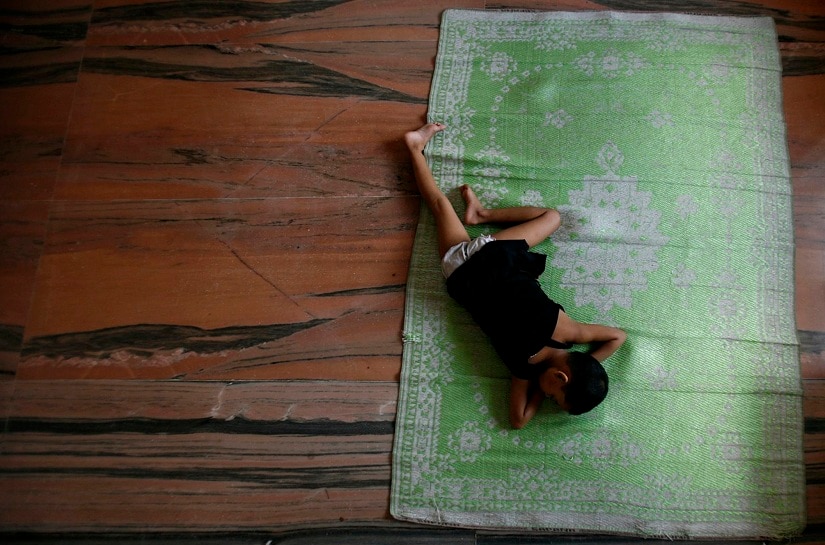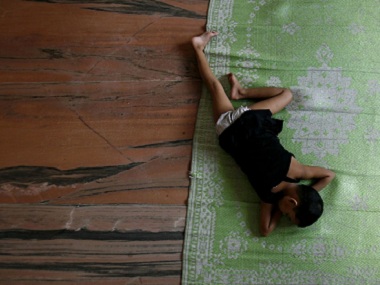When 12-year-old Kavita (name changed) was produced in front of the Child Welfare Committee (CWC) Delhi, she had already changed two shelter homes. She had been thrown out of a home where she used to work as a domestic help, after being sexually abused by her employer. She couldn’t remember much about her childhood, except that she used to speak Bengali. Kavita retained the language throughout her stint in Delhi, the city that became her home; but somewhere between her miserable childhood and tormented adolescence, the language started to slowly fade from her memory. By the time the CWC unearthed details about her family after an extensive investigation, Kavita had completely lost the language — the tenuous thread that connected her to her roots. The CWC was able to find out that she was from Siliguri, West Bengal, but Kavita couldn’t recollect the faces of her parents. Subsequently when she was reunited with them, neither could they identify their daughter who didn’t speak their language anymore. Kavita was about to go through another ordeal, despite the fact that she was restored to her family. It was not just a case of another child going missing; rather it was a missing childhood, and missing memories for people close to her. While Kavita’s story underscores the problem of child trafficking, it also shows us how reintegrating a child into her family after many years becomes a daunting task. Most of the trafficked children are taken away from their families when they are very young. We see so many children every day — on the streets, in shops, restaurants and factories — and the fact that they could be children who either went missing or were abducted for labour, begging or the sex trade, is completely lost on society. We assume that they must have a family somewhere, and that it is abject poverty that makes them beg and engage in labour. Sadly, these theories are seldom true. [caption id=“attachment_4482553” align=“alignnone” width=“825”]  A total of 174 children went missing every day in the year 2016. REUTERS/Representational image[/caption] Trafficking is a money-power nexus that is expanding by the day; it is the third largest form of trans-national illegal trade after arms and drugs. Delhi is ahead of all other cities with regard to number of missing children in 2018 — a spot it’s held on to for the past few years. A total of 174 children went missing every day in the year 2016, according to Ministry of Home Affairs data. Out of that, when we say that an average of 17 children went missing from Delhi every day, it makes a strong case for the exponential rise in child trafficking in the city. The number of missing children from Delhi is way higher than the national average, and that is an alarming trend. According to the National Crime Records Bureau, in 2016, Delhi’s rate of kidnapping and abduction stood at a whopping 106 against a national average of 12.3 (NCRB 2016). An even bigger concern is that only about 50 percent of the children reported missing were traced in 2016. According to Alliance for People’s Rights (APR), an organisation working towards child rights, within the 0-8 age group, boys exceed the number of girls among children who go missing. While the reasons can be manifold, APR claims that there is a nexus between illegal agencies and traffickers who sell babies to childless couples, and there is a demand for boys. On the other hand, for the 12+ age group, more girls than boys go missing, and they are mostly pushed into the flesh trade or put to work as domestic help. In Uttar Pradesh and Rajasthan, where the rate of child marriages are high, girls are also abducted as brides. While First Information Reports (FIRs) are being registered these days — a significant improvement over the last few years — the state’s overall safety mechanisms for children are far from being in place. Police play an integral part in finding methods to curb the problem; their understanding of the situation and its gravity is essential for speedy trials after children are reported missing. There is a need to create a security network around children and the responsibility lies both with the state as well as with communities. It is of utmost importance to focus on forming vigilance groups within communities to look out for any danger sign or potential harm to children. We need to relentlessly work on the underlying reasons for various forms of deprivation which afflict our society at large, and accelerate our efforts in varied aspects related to bringing missing children back home — inter and intra-state coordination and convergence, rescue and rehabilitative mechanism and more importantly, investing in adequate resources and trained personnel at every level. With the Trafficking of Persons (Prevention, Protection and Rehabilitation) Bill, 2018 on its way, and government initiatives like TrackChild, Operation Smile and Muskaan trying to track the status of missing children, one can be hopeful that the country will take the requisite steps in addressing the issue. Sensitisation and awareness about the various risks associated with children is still very low. It is thus important to form communities, make parents aware and equipped with preventive as well as responsive support. It is necessary to invest hugely into aspects of personal safety, peer group behaviour and knowledge about safe spaces and people. If we really want our children to be safe, there needs to be a shift in the way the problem of missing children is approached by both, the establishment and communities. To start with, a missing child case has to be reported as an FIR, as this ensures that the case is produced before a court. Regular follow-up on cases is equally important for quick and safe rescues of missing children. Rescued children need special care and protection to ensure their rights are protected and they are not drawn into the trafficker’s net again. While we recognise the importance of deterrence through criminal action to rescue victims and protect their lives and rights today, it is equally important to address the underlying conditions which drive the supply and demand for trafficked children. For this, adequate livelihood measures need to be set up, coupled with a strengthened social security net. The author is the regional director (North) at CRY — Child Rights and You
While deterrence through criminal action is important, it is equally vital to address the underlying conditions which drive the supply and demand for trafficked children.
Advertisement
End of Article


)

)
)
)
)
)
)
)
)



